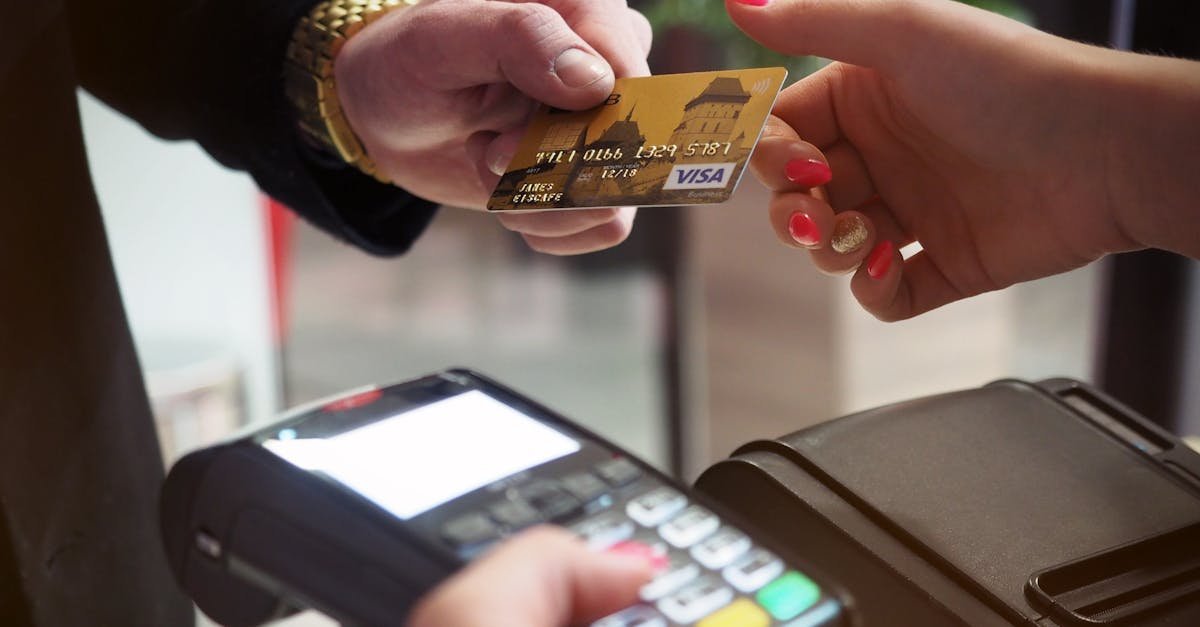Your Guide to Keeping Your Altcoins Safe and Sound
So, you’ve ventured into the exciting world of altcoins! Maybe you snagged some promising gems beyond Bitcoin and Ethereum, dreaming of future gains. That’s awesome! But hang on a second. Owning crypto isn’t quite like having cash in your bank account. There’s a crucial step you absolutely *cannot* skip: figuring out how to store altcoins securely. Think of it like finding the perfect, impenetrable vault for your digital treasure. Leaving your valuable altcoins sitting unprotected on an exchange or in a poorly secured wallet is like leaving your front door wide open with a pile of gold inside. Scary, right?
We hear horror stories all the time about people losing their crypto fortunes to hackers, scams, or simply by misplacing their access keys. It’s heartbreaking, and honestly, mostly preventable. The good news is, securing your altcoins doesn’t require a computer science degree. It just takes a little understanding and proactive effort. In this guide, I’ll walk you through everything you need to know, sharing insights like I would with a friend. We’ll break down the different storage options, from super convenient digital wallets to fortress like offline devices, and cover the essential security habits you need to adopt. Ready to become the master of your own crypto domain? Let’s dive in and ensure your altcoins stay exactly where they belong – safely in your control.
Understanding the Basics: What Are You *Actually* Storing?
Before we talk about wallets and storage methods, let’s get one thing crystal clear. When you “own” altcoins, or any cryptocurrency for that matter, you don’t actually have digital files representing coins stored on your computer or phone like MP3s or photos. It doesn’t quite work like that. What you *actually* own and need to protect fiercely are your private keys.
Imagine the blockchain – the giant, shared, digital ledger where all cryptocurrency transactions are recorded – as a massive public spreadsheet or a global bulletin board. Your specific coins exist as entries on this ledger, associated with a particular address. Think of your public address like your bank account number. You can share it freely with anyone who wants to send you coins. People can see transactions going to and from this address on the public blockchain, but they can’t access the funds just by knowing the address.
Now, the magic key, the thing that proves you own the coins at that address and gives you the power to send them elsewhere, is your private key. This is like the secret PIN, the password, and the signature all rolled into one, but infinitely more powerful and sensitive. It’s a long, complex string of characters that is mathematically linked to your public address. Whoever controls the private key controls the coins associated with that address. Period. Lose your private key, and you lose your crypto forever. If someone else gets hold of your private key, they can transfer all your funds, and because blockchain transactions are typically irreversible, there’s no bank you can call to get them back. This is the core concept you must grasp: crypto security is all about private key security.
So, where do wallets come in? A secure crypto wallet doesn’t hold your coins. It holds your private keys. It acts as an interface, allowing you to manage your keys, check your balance (by looking up your public address on the blockchain), and sign transactions (using your private key) to send coins to others. When you send crypto, the wallet software uses your private key to create a digital signature for that transaction, proving you authorized it. This signed transaction is then broadcast to the network, validated by miners or validators, and added to the blockchain. Your private key itself never needs to be broadcast or revealed during this process, especially with secure wallets.
Now, let’s talk about something incredibly important: the seed phrase (also called a recovery phrase, mnemonic phrase, or backup phrase). When you set up most non custodial wallets (wallets where you control the private keys), you’ll be given a sequence of 12, 18, or usually 24 random words. This seed phrase is essentially the master key to your entire wallet. It’s a human readable backup of your private keys. From this single seed phrase, your wallet can regenerate all the private keys for all the different cryptocurrencies you store within it, even across multiple accounts. This is incredibly convenient but also highlights the immense importance of securing this phrase.
- If your phone breaks or your computer crashes, you can download the same wallet software (or a compatible one) on a new device and restore access to all your funds using just those 12 or 24 words.
- If someone steals your seed phrase, they can recreate your wallet on their own device and steal everything.
Treat your seed phrase like the ultimate treasure map and key combined. Never store it digitally (don’t type it into a file, take a picture of it, email it to yourself, or save it in a password manager). Write it down carefully, check it for accuracy, and store it offline in multiple secure, physical locations. We’ll delve deeper into securing your seed phrase later, but for now, understand its critical role. It *is* your backup. It *is* your keys.
This concept of managing your own keys is called self custody. It’s one of the powerful aspects of cryptocurrency – you can be your own bank. You don’t need permission to hold or send your funds. But with great power comes great responsibility. Unlike a traditional bank that might refund fraudulent transactions, in the world of self custody crypto, security is entirely up to you. There’s no central authority to appeal to if your keys are compromised or lost due to your own negligence. Understanding this responsibility is the first step towards effective altcoin storage. You’re not just storing digital money; you’re safeguarding the secret keys that grant access to it on the global blockchain ledger. Grasping this fundamental difference is key to appreciating why choosing the right wallet and adopting strict security practices are not just recommendations, but necessities for anyone serious about holding altcoins.
Think about the process: The seed phrase generates a master private key. This master key, through a process called derivation (using standards like BIP39 and BIP44), can create a virtually infinite number of individual private keys and their corresponding public addresses for different coins (Bitcoin, Ethereum, Solana, Cardano, etc.) and different accounts within those coins. This hierarchical deterministic (HD) wallet structure means that single backup phrase secures everything. It’s elegant, but it also concentrates risk onto the security of that one phrase. That’s why we stress its importance so much. Every security measure we’ll discuss ultimately revolves around protecting either the private keys directly or the seed phrase that can regenerate them. It’s the heart of your crypto sovereignty and security.
Choosing Your Weapon: Types of Altcoin Wallets
Alright, now that we understand we’re protecting private keys, not mystical coin files, let’s explore the tools designed for this job: cryptocurrency wallets. There’s a wide array of options available, each with its own set of pros, cons, and ideal use cases. Broadly, we can categorize them into two main types: Hot Wallets and Cold Wallets. The key difference lies in whether they are connected to the internet.
Hot Wallets are connected to the internet. Think mobile apps, desktop software, or web based wallets (including those built into cryptocurrency exchanges). Their online nature makes them convenient for everyday use, quick transactions, and managing coins you might be actively trading.
Cold Wallets are kept offline. The most popular type is a hardware wallet, a physical device built specifically to store private keys securely offline. Another, less common form is a paper wallet, which involves printing your keys onto paper. Cold storage is generally considered the most secure option for long term holding of significant amounts of crypto, as being offline drastically reduces the attack surface for hackers.
Choosing the right wallet, or combination of wallets, depends heavily on your individual needs, technical comfort level, and how you plan to interact with your altcoins. Are you an active trader needing instant access? Or are you a long term holder (or “HODLer”) looking to secure your assets for years to come? Most serious crypto users employ a combination: a small amount in a hot wallet for convenience, and the majority secured in cold storage. Let’s break down each category in more detail.
Hot Wallets (Software Wallets): Convenience vs. Risk
Hot wallets are software programs that run on your internet connected devices like smartphones, laptops, or accessed through a web browser. They are popular because they are often free, user friendly, and make sending, receiving, and sometimes even swapping altcoins incredibly easy. If you need to make frequent transactions or interact with decentralized applications (dApps), a hot wallet is often necessary.
Let’s look at the different types:
- Mobile Wallets: These are apps you download onto your smartphone (iOS or Android). They are super convenient for making payments on the go or managing your crypto anywhere. Examples include Trust Wallet, Exodus (which also has a desktop version), or MetaMask mobile. They often use QR codes for easy address sharing. However, your phone itself can be a security risk. Malware, fake apps in app stores, loss or theft of the phone, and insecure public Wi-Fi networks are all potential threats.
- Desktop Wallets: These are programs you install on your computer (Windows, macOS, Linux). They offer a good balance of security and convenience, often with more features than mobile wallets. Examples include Exodus, Atomic Wallet, or native wallets provided by specific blockchain projects. The security of a desktop wallet heavily depends on the security of your computer. Viruses, malware (like keyloggers that record your typing or clipboard hijackers that swap addresses when you copy paste), and phishing attacks are significant risks. Keeping your operating system and antivirus software updated is crucial.
- Web Wallets (including Exchange Wallets): These are accessed through your internet browser. Some are non custodial browser extensions like MetaMask or Phantom, which allow you to interact with dApps directly. Others are custodial wallets provided by cryptocurrency exchanges (like Binance, Coinbase, Kraken).
It’s vital to understand the difference between custodial and non custodial hot wallets.
- Non custodial wallets (like MetaMask, Trust Wallet, Exodus) give you full control over your private keys. You are responsible for backing up your seed phrase. If you lose it, nobody can help you recover your funds. This aligns with the crypto ethos of “be your own bank.”
- Custodial wallets (typically exchange wallets) mean the exchange holds your private keys on your behalf. You access your funds through a username and password, plus security measures like Two Factor Authentication (2FA). This is convenient, as you don’t need to worry about seed phrases. However, it introduces counterparty risk. You are trusting the exchange’s security. If the exchange gets hacked, goes bankrupt, or freezes your account (which can happen for regulatory reasons), you could lose access to your funds. The famous crypto saying applies here: “Not your keys, not your coins.” While convenient for trading, holding large amounts of altcoins long term on an exchange is generally discouraged from a security standpoint.
Security Measures for Hot Wallets:
If you use a hot wallet, especially for anything more than pocket change, you MUST be vigilant about security:
- Strong Passwords/PINs: Use a complex, unique password or PIN for the wallet itself.
- Enable Two Factor Authentication (2FA): Wherever possible (especially for exchange accounts and some web wallets), use strong 2FA, preferably an authenticator app (like Google Authenticator or Authy) or a physical security key (like a YubiKey), rather than SMS based 2FA which is vulnerable to SIM swapping.
- Secure Your Device: Keep your phone and computer operating systems and security software updated. Be incredibly careful about apps you install and links you click. Avoid downloading software from unofficial sources.
- Beware of Phishing: Scammers create fake websites, emails, and social media messages that mimic legitimate services to trick you into revealing your password, private keys, or seed phrase. Always double check URLs. Never click suspicious links. Remember, legitimate support will NEVER ask for your seed phrase or private keys.
- Avoid Public Wi-Fi: Don’t access your wallets on unsecured public Wi-Fi networks where your traffic could be intercepted. Use a VPN if you must connect via public networks.
- Seed Phrase Security (for non custodial wallets): Even though it’s a hot wallet, the seed phrase backup must be stored securely offline. Never store it digitally on the same device as the wallet, or any connected device.
- Download from Official Sources: Only download wallet apps from official app stores (Google Play, Apple App Store) or the official wallet provider’s website. Check reviews and developer credentials. Fake apps designed to steal funds are common.
- Clipboard Malware Awareness: When sending crypto, always double or triple check the destination address after pasting it. Some malware silently replaces the address you copied with the hacker’s address in your clipboard. Send a small test transaction first if you’re unsure or sending a large amount.
Hot wallets offer undeniable convenience, making them essential for interacting with the dynamic world of altcoins and DeFi. However, their online nature inherently exposes them to more risks. Think of them as your everyday spending wallet – useful for small amounts and frequent use, but not where you’d keep your life savings. For serious, long term altcoin storage, especially for amounts you can’t afford to lose, you need to consider stepping up your security game with cold storage.
Cold Wallets: The Fort Knox Approach
When security is paramount and you’re holding altcoins for the medium to long term, cold storage is the gold standard. Cold wallets keep your private keys completely offline, making them immune to online hacking attempts, malware, and phishing scams that plague hot wallets. The two main types are hardware wallets and paper wallets.
Hardware Wallets: The Modern Standard for Cold Storage
A hardware wallet is a small, physical electronic device (often resembling a USB drive) specifically designed for one purpose: securely storing your private keys offline. It’s widely regarded as the best balance of security and usability for the vast majority of crypto users looking for robust altcoin storage solutions.
How do they work?
The magic of a hardware wallet is that your private keys are generated and stored within a protected area on the device itself (often a dedicated “secure element” chip, similar to those used in credit cards). These keys *never* leave the device, even when you’re making a transaction. When you want to send altcoins:
- You initiate the transaction using companion software on your computer or phone (like Ledger Live for Ledger devices or Trezor Suite for Trezor devices).
- The transaction details are sent to the hardware wallet device.
- You verify the transaction details (amount, recipient address) on the hardware wallet’s own trusted screen. This screen is crucial because it prevents malware on your computer from tricking you by showing different details than what’s actually being signed.
- You physically confirm the transaction using buttons on the device itself.
- The hardware wallet signs the transaction internally using your private key.
- Only the signed transaction (which doesn’t reveal the private key) is sent back to the computer/phone software to be broadcast to the network.
Your keys remain safely offline throughout the entire process, even though you’re using an internet connected computer or phone to interact with the blockchain.
Pros of Hardware Wallets:
- Top Tier Security: Private keys stay offline, protected from malware and remote attacks. The secure element chip adds physical tamper resistance.
- Multi Currency Support: Most popular hardware wallets support a vast range of altcoins, allowing you to manage diverse portfolios from one device (and one seed phrase).
- Immunity to Computer Viruses: Even if your computer is riddled with malware, your keys remain safe as they never touch the infected environment.
- Verification Screen: The built in screen allows you to securely verify transaction details before confirming.
- PIN Protection: The device itself is protected by a PIN code. Multiple incorrect attempts usually wipe the device (don’t worry, you can restore using your seed phrase).
Cons of Hardware Wallets:
- Cost: They aren’t free; expect to pay anywhere from $60 to $200+ depending on the model and features. Consider it an investment in security.
- Physical Risk: You could lose the device or it could be damaged (fire, water). However, this is mitigated by having a secure backup of your seed phrase. If the device is lost, stolen, or destroyed, you can buy a new one and restore your wallets using the backup phrase.
- Slight Learning Curve: Setting up and using a hardware wallet might seem a bit intimidating at first compared to a simple mobile app, but it’s generally straightforward with clear instructions.
- Supply Chain Attacks (Rare but possible): Only buy hardware wallets directly from the manufacturer or authorized resellers. Never buy used devices or from unofficial sources, as they could be tampered with. Check that any tamper proof packaging is intact upon arrival.
Setting Up and Using Securely:
When you first get your hardware wallet, initialize it carefully. It will generate a new, unique seed phrase (usually 24 words). Write this down meticulously on the provided recovery sheets (or better yet, engrave it onto a metal plate for durability). Verify the words. Store this seed phrase backup somewhere extremely secure and separate from the hardware wallet itself. Set a strong PIN for the device. Keep the device’s firmware updated through the official companion software, as updates often contain security patches and support for new altcoins.
Paper Wallets: The Old School Offline Method
A paper wallet is perhaps the most basic form of cold storage. It involves generating a new public and private key pair using specialized software (ideally on a secure, offline computer) and then printing these keys, often as QR codes, onto a piece of paper. You then store this paper securely.
Pros of Paper Wallets:
- Completely Offline: If generated securely, the keys never touch the internet.
- Simple Concept: Easy to understand – keys printed on paper.
- No Cost (potentially): Software for generation is often free, you just need a printer.
Cons of Paper Wallets:
- Fragile: Paper is susceptible to fire, water damage, ink fading, tearing, or simply being thrown away accidentally. Durability is a major concern.
- Security Risks During Generation: Generating the keys securely is critical and tricky. Your computer needs to be guaranteed free of malware. Using a printer can also be risky, as some printers store documents in memory. A dedicated offline computer and a “dumb” printer are recommended, which adds complexity.
- Inconvenient for Spending: To spend funds from a paper wallet, you typically need to “sweep” the private key into a hot wallet. This exposes the private key online at that moment, potentially compromising the security of any remaining funds at that address. You usually need to sweep the entire balance.
- Prone to User Error: Mistakes in recording or printing the key can lead to lost funds.
- Less Practical for Multiple Altcoins: Managing many different paper wallets for various altcoins can become cumbersome.
- UTXO Management Issues: For Bitcoin like coins (using Unspent Transaction Outputs), spending a partial amount from a paper wallet address can be complex and risk accidentally losing the “change” if not handled correctly by the importing wallet software.
While paper wallets were popular in the early days of crypto, hardware wallets have largely superseded them due to their superior combination of security, durability, and usability. For most users seeking robust cold storage for their altcoins, a reputable hardware wallet is the recommended path. Paper wallets might still have niche uses but require significant care and understanding of the risks involved.
Choosing between hot and cold storage isn’t necessarily an either/or decision. A hybrid approach often makes the most sense: keep actively used funds or smaller amounts in a secure hot wallet (preferably non custodial), and transfer the bulk of your long term altcoin investments to a hardware wallet for maximum protection. This strategy balances convenience with the robust security needed for significant holdings.
Best Practices for Ultimate Altcoin Security
Okay, we’ve covered the fundamentals of private keys and explored the different types of wallets. Now, let’s tie it all together with the essential habits and practices you need to adopt for truly secure altcoin storage. Choosing the right wallet is only half the battle; maintaining vigilant security hygiene is equally, if not more, important. These practices apply regardless of whether you use hot wallets, cold wallets, or a combination.
1. Seed Phrase Security: The Absolute Golden Rule
We’ve touched on this, but it bears repeating and expanding because it is THE most critical aspect of self custody. Your seed phrase (recovery phrase) is the master key to your crypto kingdom. Guard it with your life.
- NEVER Store Digitally: This is non negotiable. Do not type it into a notes app, save it in a text file, store it in your password manager, email it to yourself, upload it to cloud storage (like Google Drive or Dropbox), or take a photo of it. Any digital storage exposes it to hacking, malware, and data breaches. Just don’t do it.
- Write It Down Carefully and Verify: When your wallet generates the phrase, write it down clearly and accurately. Double check the spelling and order of the words. A single mistake can make recovery impossible.
- Use Durable Materials: Paper is fragile. Consider stamping or engraving your seed phrase onto metal plates (often called “steel wallets”). These are resistant to fire, water, and physical degradation. There are many specialized products available for this.
- Store Securely and Discreetly: Keep your physical backup(s) in a secure location, like a fireproof safe at home. Consider having multiple backups stored in different, secure locations (e.g., one at home, one with a trusted family member or in a bank deposit box – though be mindful of access issues with the latter). Avoid storing it right next to your hardware wallet. Think about potential threats: theft, fire, flood.
- Never Share It: No legitimate support team, developer, or company will ever ask for your seed phrase. Anyone asking for it is trying to scam you. Don’t share it with friends or family unless absolutely necessary for inheritance planning (and even then, with extreme caution and clear instructions).
- Consider Advanced Methods (Use with Caution): Some users split their seed phrase (e.g., store words 1-12 in one location, 13-24 in another) or use Shamir’s Secret Sharing (creating multiple shards where only a subset is needed for recovery). These methods add complexity and potential single points of failure if not implemented perfectly. They are generally for advanced users. Multisignature (multisig) wallets, requiring multiple private keys to authorize a transaction, offer another layer of security but also increase complexity.
- Test Your Backup: This is crucial. Periodically (maybe once a year, or after setting up), simulate a recovery process. Wipe your wallet (after ensuring you have the backup!) and try restoring it using only your seed phrase backup. This confirms your backup is accurate and accessible. It’s better to discover an issue during a test than during a real emergency.
2. Diversify Your Storage
Just like diversifying your investments, consider diversifying your storage strategy. Don’t keep all your altcoins in a single wallet or location.
- Hot + Cold Combination: As mentioned, use a secure hot wallet for small, active amounts and a hardware wallet for the bulk of your holdings.
- Multiple Hardware Wallets: For very large holdings, you might consider using multiple hardware wallets, perhaps different brands or models, potentially securing different types of assets or splitting your main portfolio.
- Backup Location Diversification: Store your seed phrase backups in geographically separate, secure locations to mitigate risks like fire or theft hitting one spot.
3. Regular Security Audits and Updates
Security isn’t a one time setup; it’s an ongoing process.
- Keep Software Updated: Regularly update your wallet software (hot and cold wallet firmware), operating systems (computer and phone), and antivirus/antimalware programs. Updates often contain critical security patches. Only update hardware wallet firmware by following official instructions carefully.
- Review Security Settings: Periodically check the security settings on your exchange accounts, wallets, and devices. Ensure 2FA is active, review authorized devices, and check for any suspicious activity.
- Scan Devices: Run regular scans for malware on your computer and phone, especially if you use software wallets.
4. Master Phishing and Scam Awareness
The human element is often the weakest link. Scammers constantly devise new ways to trick people.
- Be Skeptical: Treat unsolicited emails, direct messages, social media posts, or pop ups related to crypto with extreme caution. If an offer seems too good to be true (“double your ETH!”, “urgent security alert requiring seed phrase!”), it’s almost certainly a scam.
- Verify URLs and Sources: Always double check website addresses (URLs) before entering login details or interacting with a site. Bookmark trusted sites. Be wary of slight misspellings or different domain endings (e.g., .com vs. .xyz). Download software only from official sources.
- Never Share Sensitive Info: Reiterate: Never share your private keys, seed phrase, or passwords. Legitimate services will never ask for them.
- Beware Fake Support: Scammers often impersonate support staff on platforms like Telegram or Discord, offering to help with a problem but ultimately asking for your keys or seed phrase, or directing you to a malicious site. Initiate support requests only through official channels found on the genuine website.
- Recognize Fake Apps/Extensions: Be cautious with browser extensions and mobile apps claiming to be wallets or related tools. Stick to well known, reputable options and verify their authenticity.
5. Use Strong, Unique Passwords and Robust 2FA
This applies to everything securing access to your crypto ecosystem.
- Passwords: Use long, complex, and unique passwords for exchange accounts, wallet login (if applicable), email accounts associated with crypto services, and your computer/phone lock screens. A password manager can help generate and store these securely (but NEVER store seed phrases or private keys in it).
- Two Factor Authentication (2FA): Enable 2FA wherever possible. Prioritize authenticator apps (Google Authenticator, Authy, Duo) or physical security keys (YubiKey, Ledger Nano apps) over SMS based 2FA, which is vulnerable to SIM swapping attacks.
6. Start Small and Test Transactions
When using a new wallet, sending to a new address, or performing any unfamiliar operation, always send a small test amount first. Verify that the transaction arrives successfully before sending larger sums. This helps prevent costly mistakes due to typos or clipboard malware.
7. Physical Security Matters
Don’t forget about the physical security of your devices and backups.
- Hardware Wallets: Store your device discreetly when not in use. Don’t leave it lying around.
- Seed Phrase Backups: As discussed, use safes or other secure, hidden locations. Protect them from environmental damage (fire, water).
- Computer/Phone: Secure your devices with strong passwords, PINs, or biometric locks. Be mindful of shoulder surfing if accessing wallets in public.
8. Consider Inheritance Planning
This is an often overlooked but crucial aspect. If something were to happen to you, could your loved ones access your crypto assets? Without your keys or seed phrase, the funds could be lost forever. Consider creating clear, secure instructions on how to access your wallets and seed phrase backups. This might involve trusted family members, legal arrangements (like a will mentioning the existence and location of instructions, without revealing the keys themselves), or specialized crypto inheritance services. Plan this carefully to balance security with accessibility for your heirs.
Implementing these best practices requires diligence, but the peace of mind that comes from knowing your valuable altcoins are secure is priceless. It transforms you from a passive holder into an active guardian of your digital wealth. Remember, in the world of crypto, you are the ultimate security layer.
Taking Control of Your Altcoin Destiny
Whew! We’ve covered a lot of ground, from the very basics of private keys and seed phrases to the nitty gritty details of hot wallets, hardware wallets, and crucial security habits. The world of altcoins is incredibly exciting, offering innovation and potential, but it comes with the responsibility of safeguarding your own assets. Understanding how to store altcoins securely isn’t just a technical detail; it’s fundamental to participating safely and confidently in this space.
The key takeaways? Remember you’re storing keys, not coins. Your seed phrase is your ultimate backup – protect it fiercely and store it offline and securely. Understand the trade offs between convenience and security when choosing a wallet: hot wallets like mobile or desktop apps are great for easy access and small amounts, while cold storage, especially a reputable hardware wallet, offers the best protection for significant, long term holdings. Always practice strong security hygiene: use robust passwords and 2FA, beware of phishing scams, keep software updated, and test your backups.
Taking control of your crypto security might seem daunting at first, but by breaking it down and implementing these steps methodically, you build a strong defense for your digital assets. It’s about shifting your mindset from relying on traditional institutions to embracing self sovereignty and the diligence it requires. The peace of mind you gain is invaluable.
Now it’s your turn. Don’t just read this and forget it. Take action! If you’re already holding altcoins, review your current storage methods against these best practices. Are there vulnerabilities you need to address? If you’re new, make choosing a secure crypto wallet – likely starting with a hardware wallet for serious investment – your top priority. Take the first step today: evaluate your current altcoin storage setup or begin researching the best secure solution that fits *your* needs and goals. Your future self will thank you for securing your digital wealth properly.









